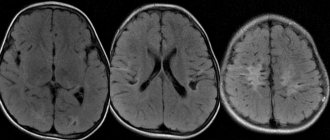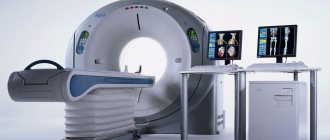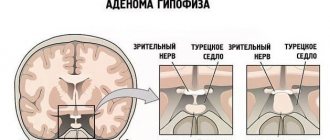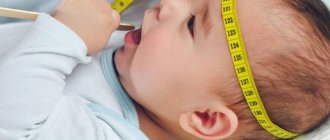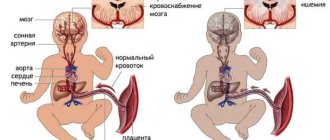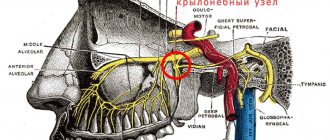What is a traumatic brain injury?
This is a closed (CTBI) or open (depending on the classification) traumatic brain injury, damage to soft tissues, cerebral membranes, blood vessels and nerves of the brain. Most often, injuries are caused by mechanical impact and most are combined - they include several types of trauma (bruises, fractures, ruptures).
Traumatic brain injury is divided into two main types – open and closed.
- In the first option, there are ruptures of the skin and connective tissue, as well as a possible violation of the integrity of the skull. If an open injury is accompanied by involvement of the subdural membrane, then the injury is considered penetrating.
- With the closed type, there is no damage to the connective tissue aponeuroses of the head, although the skin may be cut.
Treatment of concussion
During treatment you need to rest. The victim needs to lie down and avoid any mental or physical stress that could adversely affect brain function. If a person follows all the necessary recommendations on time, then the treatment ends with recovery.
Some people may have residual effects from the injury. These are decreased attention, fatigue, forgetfulness, depression, migraines.
Patients are prescribed medications to relieve unpleasant symptoms: headache, syncope, nausea. At the same time, medications are used, the action of which is aimed at improving physiological processes in the brain. The use of sleeping pills and sedatives is indicated: they help compensate for brain function.
It is prohibited to do any physical work for 30 days after the incident. Mental work and watching videos should be limited. There is no need to use headphones when listening to music.
Read more Caught drunk driving, what is the punishment 2018
A severe brain injury is an indication for a deferment from the army.
Classification
In medical terminology, skull injuries are distinguished by severity, depending on the clinical form and combination of injuries.
According to the degree of severity, they are distinguished:
- A mild one is a concussion or bruise of the brain.
- Moderate – moderate brain injury.
- Severe – acute compression of brain tissue and severe brain injury.
Another classification includes a combination of injuries. I distinguish between isolated cases, in which the patient only experiences damage to the cranial bones. Combined - combined with trauma to other organs, and combined - when the mechanism of injury combines several types of effects (mechanical, electrical, thermal, radiation).
For clinical variation, we can distinguish:
- Fractures.
- A concussion is a health injury caused by mechanical impact and a violation of neurological functions. It goes away on its own after a few days, but persistence of symptoms is a more serious injury.
- Bruise in varying degrees of severity.
- Damage to white matter as a result of braking force. Accompanied by small focal hemorrhages and axonal separation.
- Compression - occurs when the space of the cranium decreases.
- Intracranial hemorrhage is divided into subarachnoid, intracerebral, ventricular and epidural.
For clinical forms, a combination of different types is possible.
Next video on the topic:
Causes of the disease
Closed craniocerebral injury occurs due to a rough impact on the skull (a blow to or against the head). Intentional bruising of the skull with any blunt object is a criminal offense. The punishment for this bodily injury is determined by the relevant article of the Criminal Code.
If there is doubt as to whether the brain contusion was accidental as a result of a careless fall, or whether it was caused by violent acts, an examination is ordered. Concussion occurs when there is an axial load that is transmitted through the spine. Such conditions arise from a fall on the lower limbs, buttocks, an accident, or a broken nose.
In these situations, there is a strong shaking of the skull. The brain is subject to severe hydrodynamic shock because it is located in the spinal fluid. With enormous destructive force, bruising of brain tissue on the cranial bone is possible.
Pathogenesis of concussion
The manifestations of TBI are based on a disruption of normal communication between the brain stem and its hemispheres. Mechanical action on tissue is a factor in changing the state of brain tissue. It is possible that brain dysfunction is associated with metabolic disorders in neurons.
Kinds
Speaking about determining the severity of harm to health when receiving a brain injury, one must rely on the Order of the Ministry of Health and Social Development of the Russian Federation dated April 24, 2008 No. 194n “On approval of Medical criteria for determining the severity of harm caused to human health.” Only it describes in detail all the signs on which the forensic medical expert relies when analyzing the victim and making his decision on the degree of severity.
Since we are talking about brain injuries, we draw attention to paragraph 6.1 of the Order and its subparagraphs. Now in more detail.
In forensic medical practice, the basis of the conclusion for closed craniocerebral injuries is assessed based on the duration of the health disorder. Attention should be paid to the clinically proven diagnosis made by a neurologist. To do this, functional tests, EEG, and cerebrospinal fluid puncturing should be performed for research. Based on the results of the study, long-term health problems may be established due to possible functional disorders - hydrocephalus, encephalopathy and vegetative-vascular dystonia.
The bruise is often combined with a concussion. One of the complications of such an injury is the development of inflammation of the sphenoid sinus. These signs can be observed with a mild concussion or bruise of the brain; they are regarded as causing harm of moderate severity due to the delayed consequences of the damage and an unfavorable outcome, which can lead to permanent loss of performance.
For moderate brain contusions, it is necessary to evaluate brainstem symptoms and the duration of the health disorder. If there are no signs of damage to the trunk and the health disorder lasted less than 120 days, the damage is assessed as moderate. If a concussion affects the functions of the medulla oblongata, midbrain and cerebellum, then only severe harm to health, and in no case any minor harm. This is due to the development of danger to life at the time of injury.
Attention! All open craniocerebral injuries are classified as causing grievous harm to health, even in the absence of damage to the brain matter.
Severe bruises, intracranial bleeding, crush injuries, the presence of focal and brain stem symptoms are defined only as severe bodily injuries, according to paragraph 6.1.3. Part two of the order on assessing degrees of severity.
Severity of concussion
A concussion is a type of closed traumatic brain injury. As a result of traumatic brain injury, a transient disorder of brain function occurs.
The danger of injury lies in the fact that the entire brain substance is subject to pathological effects. This manifests itself in a temporary disconnection in the transmission of nerve impulses between synapses.
During treatment, normal brain function is gradually restored.
Let's find out what harm a concussion can cause to health and how to get rid of its consequences.
Causes of the disease
Closed craniocerebral injury occurs due to a rough impact on the skull (a blow to or against the head). Intentional bruising of the skull with any blunt object is a criminal offense. The punishment for this bodily injury is determined by the relevant article of the Criminal Code.
If there is doubt as to whether the brain contusion was accidental as a result of a careless fall, or whether it was caused by violent acts, an examination is ordered. Concussion occurs when there is an axial load that is transmitted through the spine. Such conditions arise from a fall on the lower limbs, buttocks, an accident, or a broken nose.
In these situations, there is a strong shaking of the skull. The brain is subject to severe hydrodynamic shock because it is located in the spinal fluid. With enormous destructive force, bruising of brain tissue on the cranial bone is possible.
Pathogenesis of concussion
The manifestations of TBI are based on a disruption of normal communication between the brain stem and its hemispheres. Mechanical action on tissue is a factor in changing the state of brain tissue. It is possible that brain dysfunction is associated with metabolic disorders in neurons.
Common signs of injury
The general symptoms of the disease in question are:
- transient confusion;
- syncope, observed at rest and intensifying when changing the position of the body or head;
- pulsating pain;
- extraneous sounds in the ears;
- general weakness;
- nausea or occasional vomiting;
- retardation of movements;
- slowing down the rate of speech;
- feeling of double objects;
- overreaction to sounds;
- photophobia;
- violation of the coherence of movements.
During diagnosis, the following symptoms are observed that are among the most important.
- The patient complains of pain in the eyes, he experiences difficulty moving them to the sides.
- Immediately after the injury, a change in the diameter of the pupils is noticeable.
- There is a difference in reflexes from different sides.
- Uncontrolled eye movements may occur.
- In the Romberg pose (legs should be together, arms straightened, positioned horizontally and extended forward, with eyes closed), unsteadiness and instability are determined.
- Spasms of the neck muscles.
In the elderly, coma is rarely observed. They are more likely to suffer from disorientation. The child's heart rate sometimes increases and the skin turns pale.
Disease severity
Depending on the severity, the health damage from a concussion varies. Let's find out the main differences between the manifestations of mild, moderate and severe concussion.
Mild degree
It is characterized by a short loss of consciousness (sometimes it is completely preserved), and a satisfactory state afterwards. Within 7 days all complaints are resolved. No residual effects are observed.
With a mild form, pallor and decreased muscle tone of the limb are noticeable (sometimes it disappears completely). There may be no vomiting. A distinctive feature of this degree is the absence of amnesia, that is, the person remembers the events preceding the concussion.
Mild closed TBI requires bed rest for at least 2 days. Improvement in health occurs quite quickly.
Average degree
With a moderate concussion, a short loss of consciousness is always recorded. Pathological neurological symptoms are largely present - dizziness, prolonged lethargy, disorientation, severe nausea. Vomiting almost always occurs. The victim has a low-grade fever for some time. Short-term amnesia develops.
Moderate concussions always require bed rest for at least a week. This category of patients is indicated for prophylactic use of nootropic drugs.
Severe degree
It is characterized by a coma (sometimes for several hours), partial or complete loss of memory. Persistent disturbances in health, headaches lasting more than 2 weeks due to damage to brain tissue. It is during this entire time that the patient needs bed rest.
In severe closed TBI, the patient does not remember what happened to him. For a long time he has been troubled by sleep and appetite dysfunctions.
If the patient is in a comatose state for more than 6 days, then damage to brain tissue is possible.
Diagnostics
This disease is diagnosed based on anamnesis of trauma and time of unconsciousness. Noteworthy are nystagmus, asymmetry of reflexes, and Marinescu Rodovich's sign.
To diagnose the disease, the following is carried out:
All of these procedures allow us to assess the extent of brain damage.
First aid for a brain injury
In any case, it is necessary to call for medical help, especially if the patient is unconscious. The person must be placed on a hard surface, with joints bent. The face should be tilted towards the ground. If the wound is bleeding, a bandage should be applied to stop the bleeding. The presence of an extensive hematoma is an indication for immediate hospitalization.
If there is no fainting, the patient is placed horizontally with his head slightly raised. All people with such an injury should go to a trauma center.
Treatment of concussion
During treatment you need to rest. The victim needs to lie down and avoid any mental or physical stress that could adversely affect brain function. If a person follows all the necessary recommendations on time, then the treatment ends with recovery.
Some people may have residual effects from the injury. These are decreased attention, fatigue, forgetfulness, depression, migraines.
Patients are prescribed medications to relieve unpleasant symptoms: headache, syncope, nausea. At the same time, medications are used, the action of which is aimed at improving physiological processes in the brain. The use of sleeping pills and sedatives is indicated: they help compensate for brain function.
A severe brain injury is an indication for a deferment from the army.
Complications of severe head injury
Severe brain contusion can cause encephalopathy. The motor skills of the legs are impaired, manifested in some dissociation of coordinated movements. If the disease is not treated, patients experience such phenomena.
- Confusion and retardation, poor speech, changes in behavior.
- There are episodes of mental imbalance and aggressive behavior (patients later regret them).
- Increased sensitivity to alcohol and infectious pathologies. Moreover, as a result of drinking alcohol, patients develop delirium.
- Convulsive attacks.
- Sharp headache.
- Psychoses and hallucinations rarely occur.
- In rare cases, patients develop dementia, lack of orientation and impaired judgment.
In 1 case out of 10, a serious brain contusion contributes to post-concussion syndrome. It manifests itself in severe pain, insomnia, and attention disorders. This syndrome is difficult to treat.
A concussion is a serious injury that causes temporary disruption of brain function. If you do not adhere to bed rest, the patient may develop impairments in the ability to remember and maintain attention. A decrease in intelligence is also possible. Early diagnosis and early therapy helps to get rid of the dangerous consequences of the disease.
Source: https://vsepromozg.ru/teoriya/sotriasenie-golovnogo-mozga-stepen-tiazhesti
Qualifying features
Qualifying criteria include aggravating conditions of the crime. The corpus delicti necessarily takes into account the premeditation of the action, the number of participants and the motive.
The qualifying signs of causing grievous harm to health in accordance with Article 111, Part 2 and Part 3 include:
- An act against a person in the performance of official duties.
- A crime with special torment and bullying.
- If the actions were performed on a person in a helpless state.
- It was done with danger to society and carrying great destructive power.
- Performed for hire.
- Had antisocial motives.
- Committed by a group – refers to the category of particularly aggravating circumstances.
- Caused death by negligence.
According to this article, a crime that occurs without the above listed qualifying features is punishable by imprisonment for 8 years. In the presence of aggravating circumstances, the court provides for liability for up to 12 years.
According to the last point, when the act entailed death through negligence, two motives are regarded - intentionality of causing harm and subsequent death. For this offense, the offender faces up to 15 years in prison.
With regard to the qualifying characteristics under Article 112 “Intentionally causing harm to health of moderate severity”, the same circumstances are considered as for Art. 111. Exceptions include clauses on execution for hire, creating a public danger and causing death by negligence. A crime without qualifying characteristics is subject to liability - imprisonment for up to 3 years or forced correctional labor for up to 3 years.
In aggravating circumstances under Art. 112 according to part 2 is punishable by arrest for up to 5 years.
Important! In these cases, the assessment of the degree of responsibility is based more on the danger of the act than on medical criteria.
○ What to do if you were beaten?
Current legislation establishes that this crime is a crime of private prosecution , that is, it can only be initiated at the request of the victim and will be proven by him in court. But this does not mean that the victim will be left to the mercy of fate.
If you have become a victim of a beating, the first thing you need to do is contact the police with a statement in which you need to set out all the circumstances of the incident, accurately describe the blows and the place where they were applied, the violent actions that caused pain. You should not hide anything, just as you should not fantasize - the more accurately the facts are presented, the more accurately and quickly the criminal will be punished.
After the victim contacts the police, and such an appeal is mandatory from the point of view of the procedure for collecting and recording evidence in the case, the police will conduct a pre-investigation check , during which the parties to the conflict and witnesses will be interviewed.
The most important thing is that the victim will be given a referral to undergo a forensic medical examination, the conclusion of which confirms the fact of causing physical harm.
It is, of course, better to undergo an examination by a doctor before receiving such a referral, preferably immediately after the beating. This will guarantee the recording of the fact of causing bodily harm - the main subject of proof, and, as a consequence, the punishment of the offender.
Further, based on the results of the audit, the case will be sent to court or closed for lack of corpus delicti.
Restrictions from other species
Intentional harm of moderate and severe severity should be distinguished from beatings and torture:
- Batterings are most often characterized by inflicting injuries of mild severity. A head injury that occurs as a result of numerous beatings is regarded as severe or moderate harm. Which automatically equates the act to Articles 111 and 112.
- Torture is characterized by the infliction of suffering, both physical and psychological, but the main thing is the systematic infliction of damage to a person. This punishment is considered provided there are no serious consequences for health and loss of performance from parts 2 and 3 of the articles on causing harm.
- Separately, it is worth considering the third part of 111 about the grave consequences of bodily injuries in the head area that resulted in death due to negligence. It is distinguished from murder, since this crime also contains intent, but the accused did not foresee the lethal outcome or believed that the actions would not entail consequences.
Punishment for concussion
How to record beatings and where to apply to obtain a certificate of harm to health - we talked about this in the previous article.
Today I will try to explain the composition and essence of this crime as simply and clearly as possible, and consider options for liability depending on the severity of the beatings inflicted.
○
Article of the Criminal Code of the Russian Federation for beatings.
Article 116 of the Criminal Code of the Russian Federation is devoted to the corpus delicti of assault and the punishment that the offender faces if such actions are committed against the victim.
As we already know (see the article on examining battery), battery is repeated blows or other violent acts committed against the victim.
The condition for the use of this composition is the infliction of physical pain by the actions of criminals. In this case, pain and suffering must be caused by the actions themselves, and not by their consequences .
In my practice, there was a case when parents forced a child to kneel in a corner for a long time, thereby causing him physical pain . The actions of the mother and father in this case were qualified precisely as beatings inflicted on their minor child.
The qualified elements of this crime, namely the circumstances that aggravate the guilt and provide for a more severe punishment, are the infliction of beatings from hooligan motives and the commission of such actions based on hatred on ideological, racial, social, political and other grounds.
Is it possible to determine the degree yourself based on the symptoms?
After receiving an injury, you should still seek help from a medical facility. Specialists will provide a reliable diagnosis and also provide qualified treatment. Determining the disease in case of a closed craniocerebral injury, and specifically a concussion, will help to accurately determine the severity of the harm to health.
You can do this, in fact, it’s not difficult. We turn to the same Order that we described above and look for a brain injury that matches the injury received by the victim. If there is one, we look at what degree of severity it is.
If not, the same Order contains an Appendix - “Table of percentages of permanent loss of general ability to work.” We are looking for trauma in it. Found - we look at the % of loss and correlate it with paragraphs 7.2 and 8.2 of the Order (moderate severity = from 10 to 30% inclusive, mild = up to 10%, the rest = severe).
Of course, this is just a rough definition. A forensic medical expert will tell you exactly - only his word will be authoritative.
Or, you can do it simpler: knowing your diagnosis, you can approximately determine the severity of the damage:
- A concussion or mild bruise is regarded as causing moderate harm to health - more details.
- For open craniocerebral injuries, only a severe degree is assigned - more details.
- Severe and moderate bruises, bleeding, cerebral hematomas, etc. are also severe.
Infliction of bodily harm: article for beatings of moderate, mild and severe degree
Criminal liability for causing bodily harm is individualized to the maximum extent possible.
The legislator prudently took into account almost all possible details that influence the mitigation or toughening of punishment in a particular situation related to beating. Undoubtedly, only an experienced practicing lawyer will understand the intricacies of jurisprudence, but the basic “classification” of crimes related to causing bodily harm to another person is useful for everyone to know.
How to identify traumatic brain injury at an early stage?
The first signs of a slight concussion
:
- general weakness and drowsiness;
- headache of any nature and intensity;
- problems with coordination and balance;
- dizziness (mild to severe);
- nausea and retching (vomiting);
- tinnitus, confusion, “stars” before the eyes;
- it is difficult to focus your gaze on one point;
- Pain in the eyes.
There is still a popular warning that if a concussion occurs, the patient should not be allowed to fall asleep. But if hemorrhage has not been diagnosed, sleep will only be beneficial.
Common signs of injury
The general symptoms of the disease in question are:
- transient confusion;
- syncope, observed at rest and intensifying when changing the position of the body or head;
- pulsating pain;
- extraneous sounds in the ears;
- general weakness;
- nausea or occasional vomiting;
- retardation of movements;
- slowing down the rate of speech;
- feeling of double objects;
- overreaction to sounds;
- photophobia;
- violation of the coherence of movements.
During diagnosis, the following symptoms are observed that are among the most important.
- The patient complains of pain in the eyes, he experiences difficulty moving them to the sides.
- Immediately after the injury, a change in the diameter of the pupils is noticeable.
- There is a difference in reflexes from different sides.
- Uncontrolled eye movements may occur.
- In the Romberg pose (legs should be together, arms straightened, positioned horizontally and extended forward, with eyes closed), unsteadiness and instability are determined.
- Spasms of the neck muscles.
How to find out the type of damage yourself?
Immediately after a concussion, it is almost impossible to objectively assess the severity of harm to health on your own. But the 3 main signs you can look for for a moderate to severe concussion are as follows:
- The longer the loss of consciousness lasted (even in minutes), the more serious the injury.
- Severe nausea and vomiting.
- The patient does not remember how the injury occurred. And the more he doesn’t remember, the more severe the concussion.
An accurate diagnosis can be made only after examination by a neurologist and a comprehensive outpatient examination. The effectiveness of treatment and how quickly and without consequences the patient will recover from injury will directly depend on this.
What happens in the head during injury
Traumatic brain injury is physical damage to the bones of the skull, membranes, nerves and blood vessels. Violation of brain functions occurs due to vibration of nerve cells, and in the zone opposite to the impact. Changes in neurons at the molecular level lead to disruption of the functions of the brain region.
In an experiment on monkeys, it was established that at the moment of impact, similar rotational movements of the hemispheres occur in several planes. Twisting and tension of axonal processes occurs.
At the moment of injury, the main force of damaging energy falls on the border of the hemispheres and the medulla oblongata.
Due to the difference in pressure, microhemorrhages are formed inside the brain tissue due to damage to the cerebral capillaries.
Rupture of large intracranial vessels is one of the dangerous head injuries. The blood pouring out of the vessels puts pressure on neighboring areas and nerve endings, which is manifested by headaches, nausea and vomiting.
Varieties
There are two types of traumatic brain injuries; closed and open. What is CTBI? What harm do such injuries cause to health? Closed traumatic brain injury involves fractures of the skull bones that do not cause damage to the skin.
An open head injury is considered if there is a wound, therefore, the skin in the area of the brain part of the skull is damaged.
If the dura mater is intact, the traumatic brain injury is non-penetrating, otherwise it is penetrating.
Let's consider an algorithm for assessing the severity of harm to health in cases of concussion, as well as in other TBIs. What do you need to know in order to correctly assess the patient’s health status?
Let’s say that a patient has a concussion as a result of a traffic accident. What is the severity of the damage to health? The assessment of harm caused by TBI is complex and commission-based. An expert group is being created, which includes a neurosurgeon and neuropathologist. In case of psychopathological manifestations of trauma, a psychiatrist is invited to the expert commission for examination.
If a patient is diagnosed with a concussion, the severity of the harm to health is determined by an expert group of medical professionals. Problems with neurons in TBI are explained by damage to the temporal and frontal lobes of the brain, damage to the white matter of the cerebral hemispheres.
Recommendations for experts on conducting assessment activities
Let's consider an algorithm for assessing the severity of harm to health in cases of concussion, as well as in other TBIs. What do you need to know in order to correctly assess the patient’s health status?
Let’s say that a patient has a concussion as a result of a traffic accident. What is the severity of the damage to health? The assessment of harm caused by TBI is complex and commission-based. An expert group is being created, which includes a neurosurgeon and neuropathologist. In case of psychopathological manifestations of trauma, a psychiatrist is invited to the expert commission for examination.
If a patient is diagnosed with a concussion, the severity of the harm to health is determined by an expert group of medical professionals. Problems with neurons in TBI are explained by damage to the temporal and frontal lobes of the brain, damage to the white matter of the cerebral hemispheres.
Document requirements
Medical documents that are presented for analysis by experts require complete data, without which it is difficult to resolve issues. For example, a medical history contains daily entries demonstrating the dynamics of the patient's condition.
If experts cannot determine the severity of a concussion or they have doubts, in this case the patient is re-examined and additional specialists are added to the commission.
An examination without a full examination of the victim, carried out using original medical documents (outpatient card, medical history), is permitted only if it is completely impossible for experts to actually examine the patient.
Exceptional cases in which a concussion and the severity of damage to health are determined in absentia are possible only with the provision of special medical documents that contain comprehensive information about all injuries, as well as the clinical course and outcome.
The records should also contain other information that the experts will need to resolve the issues posed to them.
Moderate bodily injury
Moderate battery is a serious crime and is likely to result in a custodial sentence. To qualify the actions of the batterer, it is necessary to conduct a forensic medical examination of the beatings inflicted, the conclusions of which should establish the need for treatment of the victim for at least three weeks.
Depending on the situation in which the bodily harm was inflicted, the judge's sentence may be increased (see punishment for beating a person).
For example , if you and your friend were beaten at the same time, while both of you were in hospital for 24 days, then the perpetrator may be sentenced to imprisonment for up to five years (instead of the three years provided for in Article 112 of the Criminal Code of the Russian Federation for beating one victim).
The same punishment (up to five years) awaits someone who uses moderate violence against a child under 14 years of age.
Important points
If a patient has a concussion, the severity of the harm to health is determined by the decision of the commission conducting a forensic medical assessment of the patient’s condition. It is based on objective injuries that were discovered in the victim as part of his examination at a medical organization.
Assessing the consequences of TBI involves identifying and taking into account the consequences of exacerbation or complications that preceded the injury. Disturbances in the provision of medical care that could affect the patient’s health are also analyzed.
Causes of the disease
Closed craniocerebral injury occurs due to a rough impact on the skull (a blow to or against the head). Intentional bruising of the skull with any blunt object is a criminal offense. The punishment for this bodily injury is determined by the relevant article of the Criminal Code.
If there is doubt as to whether the brain contusion was accidental as a result of a careless fall, or whether it was caused by violent acts, an examination is ordered. Concussion occurs when there is an axial load that is transmitted through the spine.
Such conditions arise from a fall on the lower limbs, buttocks, an accident, or a broken nose.
How to stop beatings and bring the offender to justice?
The sooner you contact a forensic expert, the easier it will be for specialists to establish the fact of harm. This can be done even before writing the application.
You can contact both specialized authorities - a forensic medical examination, and a hospital, having received a certificate from a traumatologist or neurologist.
If you write a statement about beating, then an examination will be ordered by law enforcement agencies.
What to do when contacting the police:
- How to stop beatings and bring the offender to justice? Write a statement with a detailed description of the crime, the characters involved, the methods of inflicting pain and the locations of the blows.
- Examination by an expert in the direction of the police, followed by a conclusion on the severity level.
If you decide to identify harm yourself, then you should adhere to the following algorithm:
- Visiting a clinic, hospital, or emergency room. There, a certificate is issued with the diagnosis upon application, the nature of the injuries and the time of admission to the medical facility.
- With all the documents, go to the police to write a statement.
- Repeated examination with the participation of forensic doctors.
The last point is not always fulfilled, since the investigation may only need documents from the hospital.
Important! Battery is a serious offense. Do not be afraid to seek help from law enforcement agencies; beatings can be repeated and lead to more serious consequences.
What is a concussion and how to determine it
Scientists cannot accurately describe all the processes that occur in the brain during a concussion. But doctors agree that during a concussion, the nutrition of nerve cells deteriorates and communication between different brain centers is disrupted, which can most likely lead to serious health problems.
The main signs of a concussion are the following symptoms:
- very severe headaches that are similar to migraine attacks;
- feeling of tightness in the head;
- short-term loss of consciousness;
- blurred vision of the surrounding reality, confusion of thoughts;
- memory loss, in particular, a person may forget events that alternated with the injury;
- dizziness, appearance of “fly spots” before the eyes;
- the occurrence of ringing, noise in the ears;
- vomiting, nausea;
- speech becomes slurred;
- lethargy;
- taste distortions;
- sensitivity to noise, bright light;
- irritability;
- sleep disorders, depression;
- feeling tired;
- seizures;
- enlarged (or unequal in size) pupils.
Some signs may appear immediately after the injury, others appear after some time: several hours, days. Even just a few of the symptoms listed above may indicate a concussion or that a more serious problem exists. Therefore, after a strong blow to your head, you should immediately consult a doctor.
Comments
Hello. indicated in the forensic medical examination. that the severity of the harm to health has not been determined. Am I legally charged under Part 1 of Article 116 of the Criminal Code of the Russian Federation?
Hello, I had the following situation: I was beaten by my ex-common-law husband, from whom I have a child, along with his girlfriend. They beat me hard and kicked me. His face is all blue, his arms are bruised, he may have a concussion. At the trial, the medical examiner was not told how serious the beatings were. What threatens them and is there anything at all? He already has 3 convictions and even went to jail for 3 weeks, also for fighting.
Hello! Tell me why the forensic medical expert puts the injury at a mild level, if after beating my brother, the doctors took me away in an ambulance with a concussion, bruise and hematoma of the chest. They said, since there are no fractures, get treatment on an outpatient basis. C 6 September to October 11, she was under treatment. She had 2 forensic medical examinations. The first one was recorded a week later, bruises and bruises. The second examination after treatment by a neurologist with a diagnosis of a concussion of the brain, acute period, was treated for 23 days. They still diagnosed mild injuries. the state of health was poor. Is it correct. and what to do if not so.
Good evening. I would like to know what is at stake. There was a fight in June 2016, there were two of us, on their territory, but they attacked. As a result, they made a statement and one was cleared of a mild beating (concussion), as the doctor said, although later they said that he supposedly went to the hospital in another city and waited for time to be given sick leave for 21 days. There hasn’t been a trial yet, one has no complaints, the other says I’ll put them both in prison. 3 months passed and an unfamiliar guy ran into me (later it turned out that he had come to our area to visit a friend, and the friend was the one who threatened to put him in jail.), we got into a fight, and I told him to go into the oncoming lane. I went on shift, he had a trial and was given a fine of 5,000, I think I will be given the same thing in this trial. What could I face in these two cases? Thank you in advance.
My husband was beaten with a shovel; his hand was broken; his cheekbone was fractured; soft tissue bruise; surgical intervention.
Hello, I would like to know what stages, I wrote a statement about the beatings, on the same day I was admitted to the hospital, they gave me a referral for Sam, but the doctor said she would be on medical history, I was discharged from the chat room, I went to the building where they treated her before, they said it’s okay write consent through the district police officer and according to the medical history because At that time, almost everything had passed, I called the district police officer yesterday, he said that the examination is still at the prosecutor’s office, how long has it been going on, it turns out that a month has already passed and I don’t know exactly what they wrote on the card and will write there, what if it wasn’t sent at all and they might close the case .What should I do?
Most likely, your application is currently being checked by an investigator. In accordance with Art. 223 of the Code of Criminal Procedure of the Russian Federation, the inquiry is carried out within 30 days from the date of initiation of the criminal case. If necessary, this period can be extended by the prosecutor to 30 days; the suspended inquiry can be resumed on the basis of a decision of the prosecutor or the head of the inquiry unit. You have the right to obtain all the information you are interested in from the police officer involved in your case.
Good afternoon Please tell me what article can be applied if a neighbor burst into my apartment with a hammer in her hands, in front of a two-year-old child, she hit my head against the wall.. I was taken away in an ambulance with a concussion.. I was treated in the hospital for 5 days and discharged home.. threatened my mother (she is 65 years old).. which article can I use? Thank you!
In this case, your neighbor violated the following articles of the Criminal Code of the Russian Federation: 1) Part 2 of Art. 139 of the Criminal Code of the Russian Federation, illegal entry into a home against the will of a resident, committed with the use of violence or the threat of its use, is punishable by a fine in the amount of up to two hundred thousand rubles or in the amount of the wages or other income of the convicted person for a period of up to eighteen months, or by correctional labor for a term up to two years, or forced labor for up to two years, or imprisonment for the same period 2) Art. 115-116 of the Criminal Code of the Russian Federation (beatings or causing minor harm to health) with punishment in the form of a fine, correctional labor or arrest.
What to do if there are no visible signs of beatings, but the areas after the blows hurt? Can only witnesses prove it?
Hello, tell me how I can achieve justice and punishment for the offender. I found out about my partner’s betrayal. We lived together for 2 years as a full-fledged family. I began to drive him out to his mistress, he began to insult me, I slapped him in the face, in the end he began to throw me around the apartment on all the sofas, tables, walls, tried to strangle me, wringing his hands, in general, at least a dozen bruises and contusions were recorded during the forensic medical examination. different sizes on the arms, legs, and face. I called the police, they found him at the crime scene and drew up a report. They said that there would be an open criminal case. As a result, it was only after 3 weeks that I broke through and found out which of the investigators was handling my case. The investigator replied that the prosecutor looked at the case and did not see a crime there and due to the lack of witnesses they are closing the case. The police are inactive, they didn’t even try to investigate anything and ignore the forensic examination. He says that they interrogated the roommate and he said that he was not me and did not even throw me around the apartment. He just held my hands when I was hysterical and tried to beat him. And I got bruises on his knuckles and hands when I tried to break free. I began to be indignant whether the investigator read the case, the statements and the forensic medical examination. They describe the size and places where the blows and bruises were sustained, even a child would understand that holding a person by the hands on the shoulders, lips and legs, bruises 5 cm in diameter could not have appeared. Why? she said, okay, I’ll interrogate your neighbors. And this is after 3 weeks of investigating the case?? She didn’t even do that. The investigator said maybe he didn’t beat you, but when he went somewhere, someone else came to your house and beat you. This is what the investigator says, my jaw dropped. This is lawlessness and inaction of the police and the prosecutor's office. Instead of investigating, working and sorting it out, they ignore the evidence and facts and close the case. What should I do, how to bring the case to court? Where to contact? How to achieve justice?



